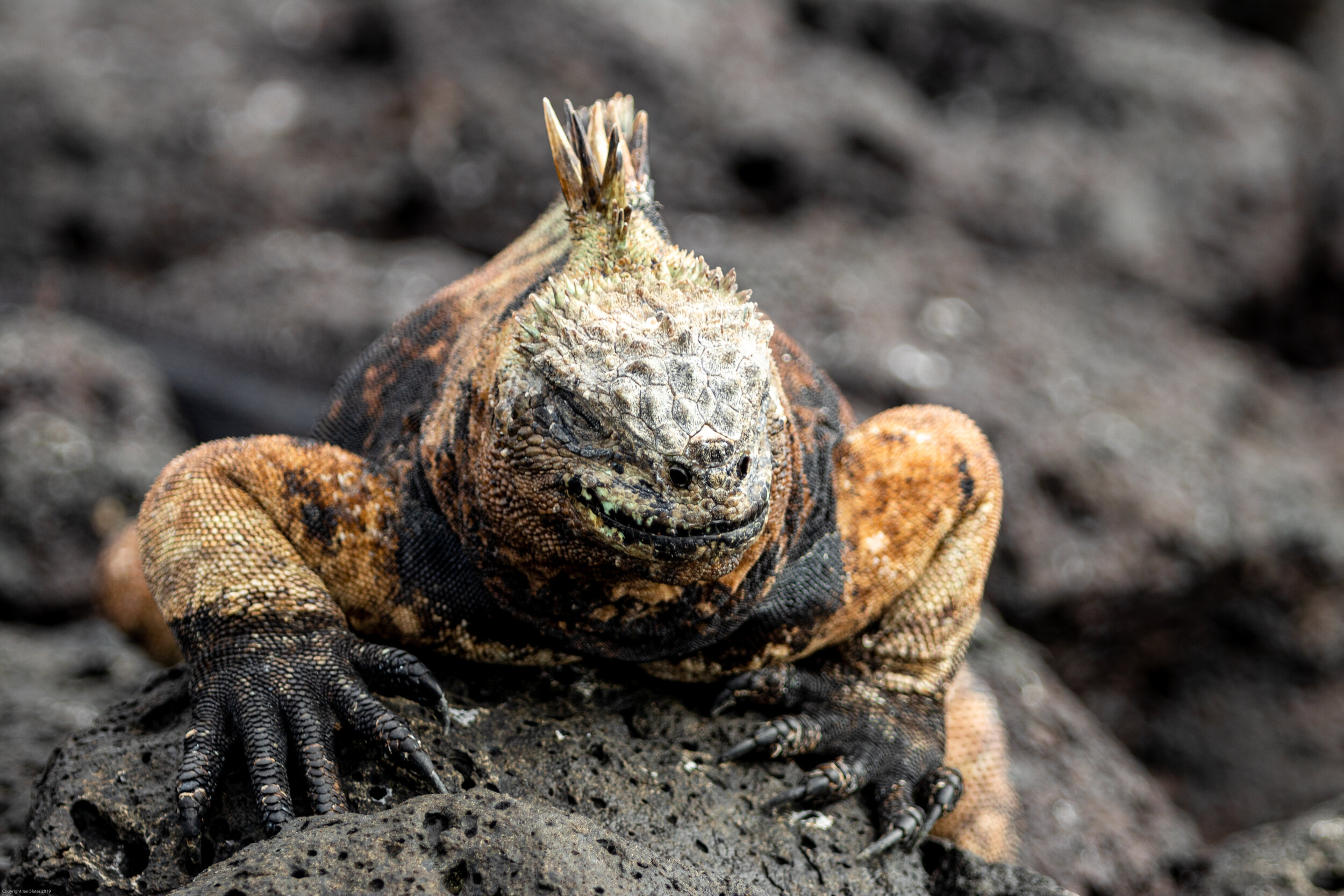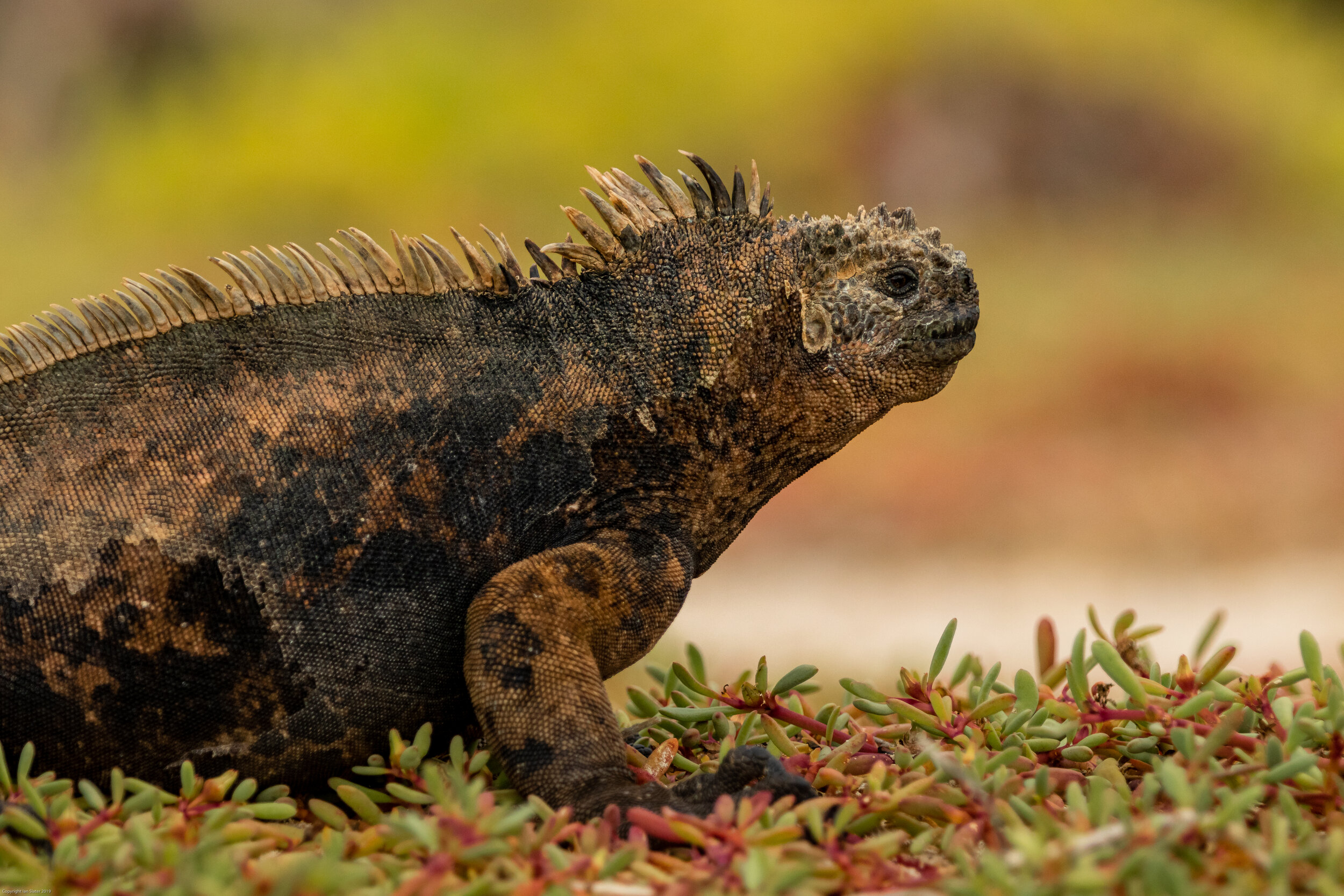Galapagos - Marine iguanas
The marine iguana is the only lizard that can live and forage at sea and is endemic to the Galapagos. There are six very similar subspecies, each from different islands, with those from Isabela and Fernandina being the largest. The adults are black for most of the year, however the males change colour during the mating season – with different subspecies adopting different colourations. The juveniles are generally black, with a lighter dorsal stripe than the adults. Marine iguanas are not a very agile species on land, but they are excellent swimmers. Larger individuals go further out to sea and use their powerful claws to grip on to rocks in strong currents to feed, whilst the smaller ones stay inshore near rock pools, feeding on algae exposed at low tide. Due to the high concentration of salt in their diet, marine iguanas filter their blood at the nose and sneeze out the excess salt, often forming salt crystals on the snout. Iguanas are highly gregarious and group together to conserve heat. In the morning, they bask in the sun, absorbing heat with their black scales until they have enough energy to swim out to sea to forage.









